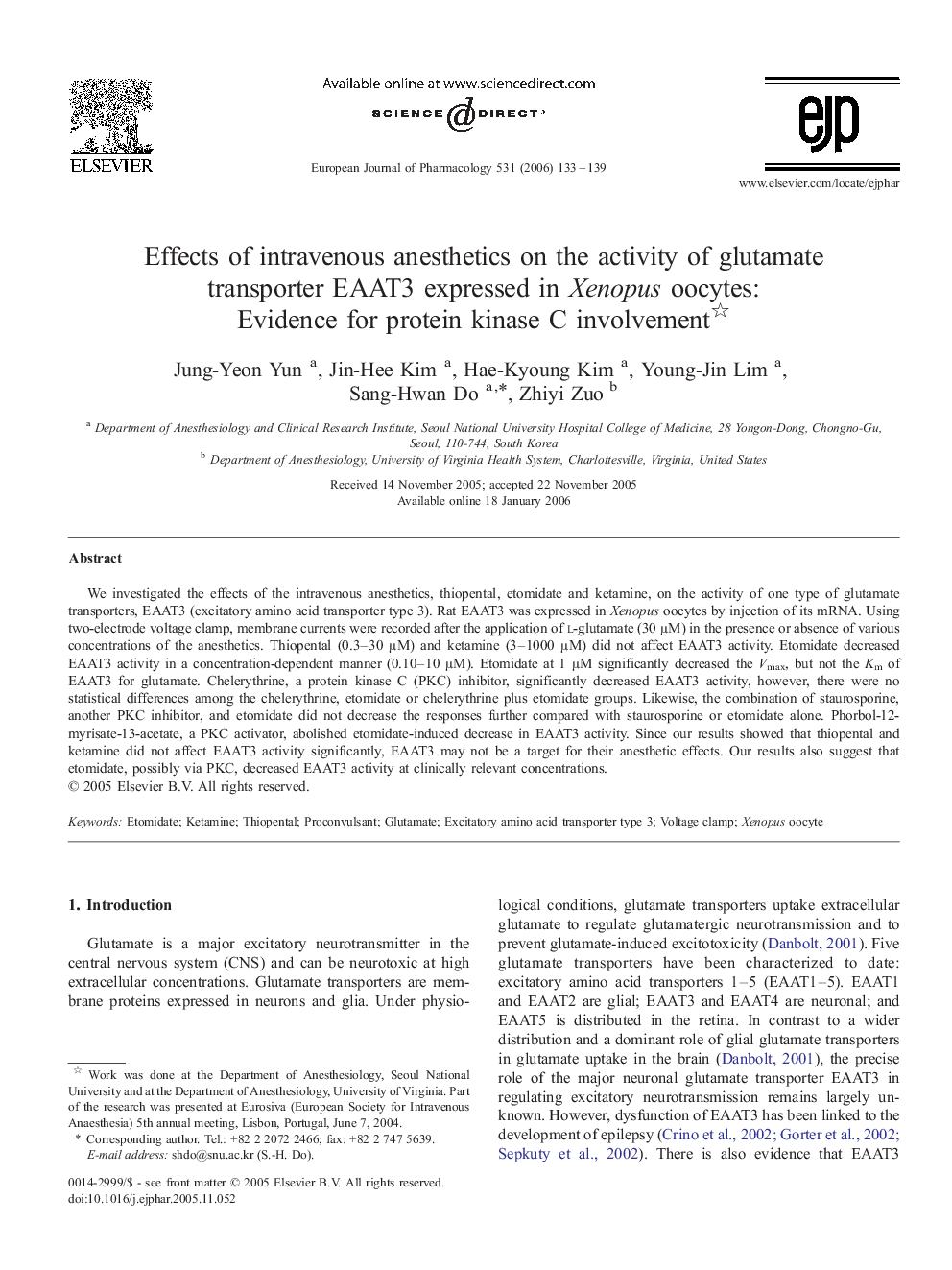| Article ID | Journal | Published Year | Pages | File Type |
|---|---|---|---|---|
| 2537415 | European Journal of Pharmacology | 2006 | 7 Pages |
Abstract
We investigated the effects of the intravenous anesthetics, thiopental, etomidate and ketamine, on the activity of one type of glutamate transporters, EAAT3 (excitatory amino acid transporter type 3). Rat EAAT3 was expressed in Xenopus oocytes by injection of its mRNA. Using two-electrode voltage clamp, membrane currents were recorded after the application of l-glutamate (30 μM) in the presence or absence of various concentrations of the anesthetics. Thiopental (0.3-30 μM) and ketamine (3-1000 μM) did not affect EAAT3 activity. Etomidate decreased EAAT3 activity in a concentration-dependent manner (0.10-10 μM). Etomidate at 1 μM significantly decreased the Vmax, but not the Km of EAAT3 for glutamate. Chelerythrine, a protein kinase C (PKC) inhibitor, significantly decreased EAAT3 activity, however, there were no statistical differences among the chelerythrine, etomidate or chelerythrine plus etomidate groups. Likewise, the combination of staurosporine, another PKC inhibitor, and etomidate did not decrease the responses further compared with staurosporine or etomidate alone. Phorbol-12-myrisate-13-acetate, a PKC activator, abolished etomidate-induced decrease in EAAT3 activity. Since our results showed that thiopental and ketamine did not affect EAAT3 activity significantly, EAAT3 may not be a target for their anesthetic effects. Our results also suggest that etomidate, possibly via PKC, decreased EAAT3 activity at clinically relevant concentrations.
Keywords
Related Topics
Life Sciences
Neuroscience
Cellular and Molecular Neuroscience
Authors
Jung-Yeon Yun, Jin-Hee Kim, Hae-Kyoung Kim, Young-Jin Lim, Sang-Hwan Do, Zhiyi Zuo,
